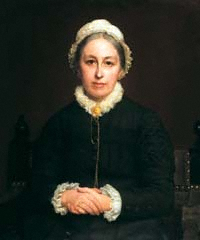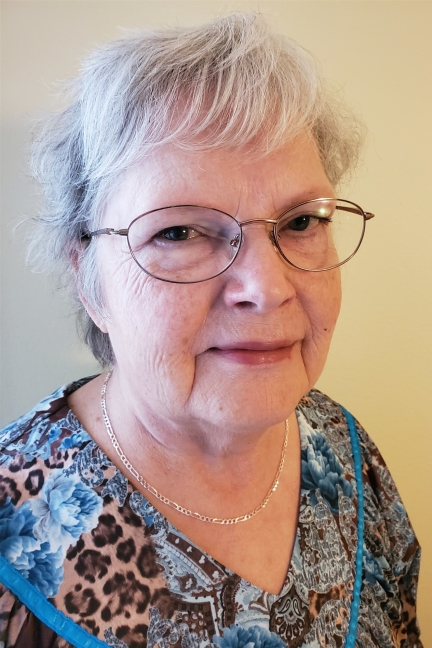by Nancy Springer
In 19th century England, while sons of the well-to-do were sent to boarding school and university, daughters were generally taught at home by governesses. However, most of these governesses were not very well qualified. Being a governess was the only occupation open to a single woman who was not a servant, so education by a governess was held to quite a low standard. Indeed, it mostly depended on what the governess had been taught by her governess.

This image is in the public domain via Wikicommons.
Because education in the Victorian Era was so limited for girls, early feminists in the 1860s began an effort to have young women admitted to colleges, especially Cambridge and Oxford. Emily Davies and Barbara Bodichon, both members of the Society for the Employment of Women, set up a committee to see whether girls could sit at such institutions’ local examinations—a fairly safe first step which met with little opposition, as merely taking the exam did not mean the girl would necessarily go to the college as a resident student. However, the feminists’ not-yet-spoken goal was exactly that.
They faced strong opposition, not only from a conservative society but also from medical “authorities.” According to the medicos of the time, too much education for “the less robust sex” was risky. They cited Darwinism, their theory being that the evolution of the female brain had stopped short of that of the male brain in order to preserve woman’s “vital energy” for childbirth. Accordingly, most Victorian doctors cautioned women not to undertake advanced studies for fear of “menstrual disability.” It was thought that female students of higher education would be in danger of “anorexia scholastica,” a condition of emaciation and collapse brought on by too much hard brain work, especially during “that time of the month.”
Nevertheless, the feminists persevered, and in 1869, amid a fair amount of controversy, the College for Women at Benslow House was broached in a leased property in Hitchin, Hertfordshire, thirty miles south of Cambridge. This location was chosen as a compromise with male opposition, safely distancing the female students from Cambridge men. Five daring female students took residence in Benslow House the first year. Thus the feminists got their Balmoral boots in the door of residential higher education, and this was only the beginning of their ambitious scheme to create a permanent institution and presence at the University of Cambridge for women. Just a few years later, in 1873, the college purchased a location near the village of Girton, a mere mile and a half from Cambridge. There, these uppity females erected a three-story structure now known as Old Hall, and their institution for higher learning was renamed Girton College. Enrollment now consisted of thirteen women.
Necessarily, these early students undertook martyrdom for the sake of the cause. Girton College was very controversial indeed, and the phrase “Girton Girl” struck terror into the hearts of traditional parents. “That infidel place!” was denounced from pulpits as being evil and un-Christian, dangerously pulling women away from the home and thereby threatening family as the basis of all social order. As a result of such opprobrium, the women students had to be paragons of virtue in order to prove that they were not demon-possessed. Closely chaperoned, they were required to maintain the strictest virtue, specifically in the form of physical separation from the masculine majority of students at Cambridge. And, of course, they were limited as to the number of courses they could take and were regularly weighed and measured, all for fear of “anorexia scholastica.”

This image is in the public domain via Wikicommons.
In the face of male opposition, the Liberal Arts curriculum evolved as a way to educate women without preparing them for professions. The purported idea was not to make them rivals of men, but to make them better wives and mothers. They learned Latin and Greek, some mathematics and history, and a great deal of moral philosophy. Later, sciences were added—astronomy, botany, physics, chemistry, even zoology! Sometimes, at women’s colleges less dedicated to a feminist agenda than Girton, all of the sciences tended to morph into “domestic” and “household” sciences. These, along with a great deal of Bible study, produced a number of well-qualified missionaries. Scholarship for women was not, ostensibly, the aim. Women’s colleges did not give “degrees.”
But true “Girton Girls” continued to strive, whether overtly or covertly, for equality. Degrees for women were exactly what the founders of Girton, Emily Davies and Barbara Bodichon, had in mind for an eventuality. In due course, they won permission for their students to sit Cambridge University examinations, and in 1887, a “Girton Girl” outshone all her male peers in the classics. Feminists then increased pressure upon the University to grant degrees for women who earned them, and, amid considerable uproar, the matter was put to the vote in 1897.
Alas, the proposal was overwhelmingly defeated, an effigy of a “Girton Girl” riding a bicycle, sporting bloomers and striped stockings, was hung in the University square, jeered by victorious male students and faculty who rioted throughout the night. It was not until 1948 that Cambridge finally agreed to award degrees to women.
However, Girton College of Cambridge continues to flourish as a feminist citadel and as an institution of true scholarship to this day.
Nancy Springer is the author of the nationally bestselling Enola Holmes novels, including The Case of the Missing Marquess, which was made into the hit Netflix movie, Enola Holmes. She is the author of more than 50 other books for children and adults. She has won many awards, including two Edgar Awards, and has been published in more than thirty countries. She lives in Florida.


